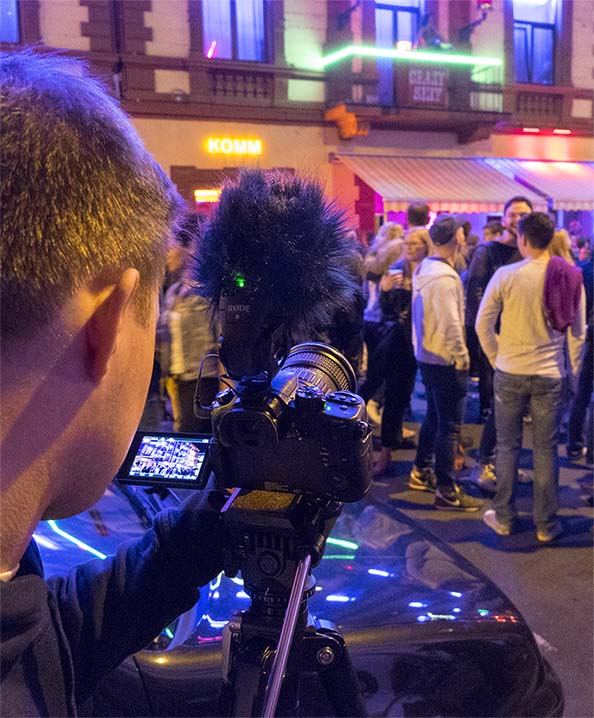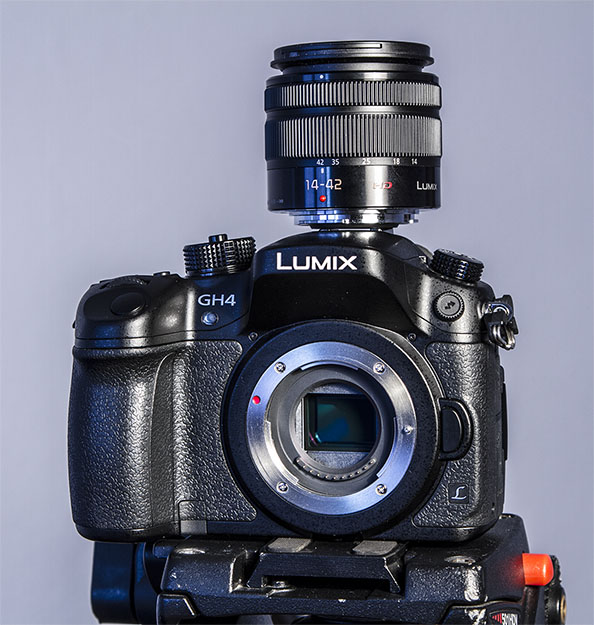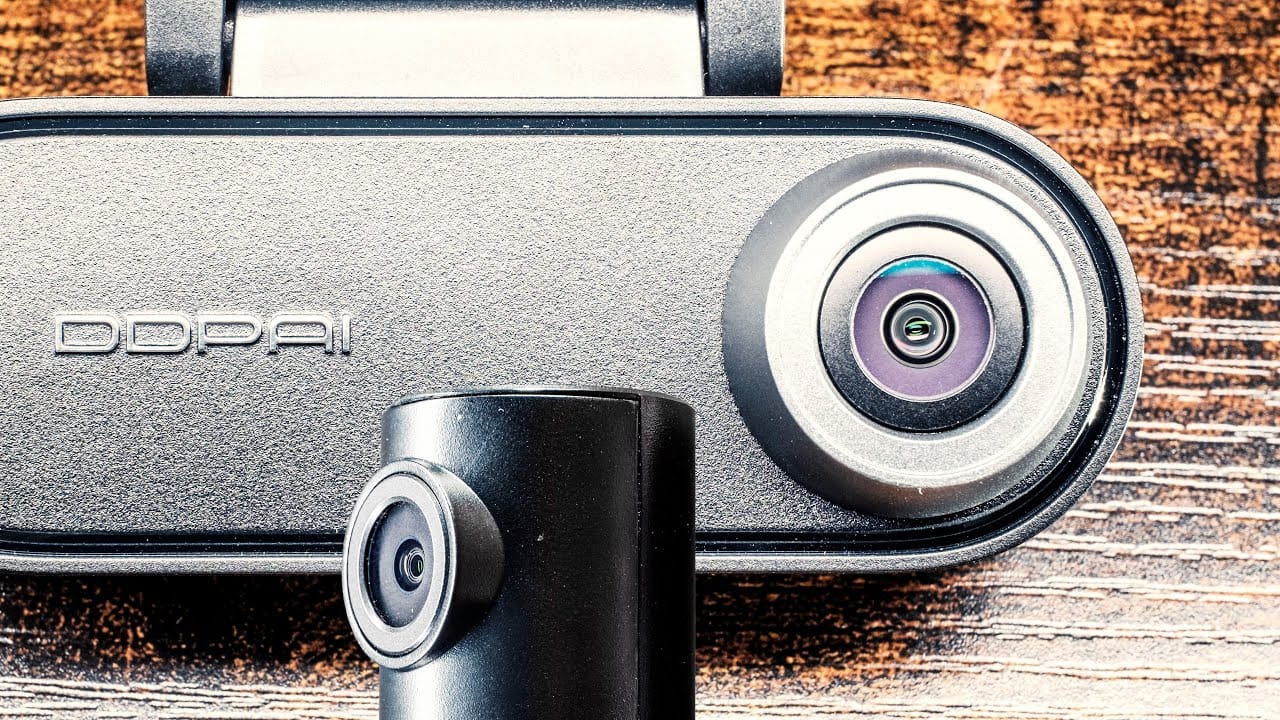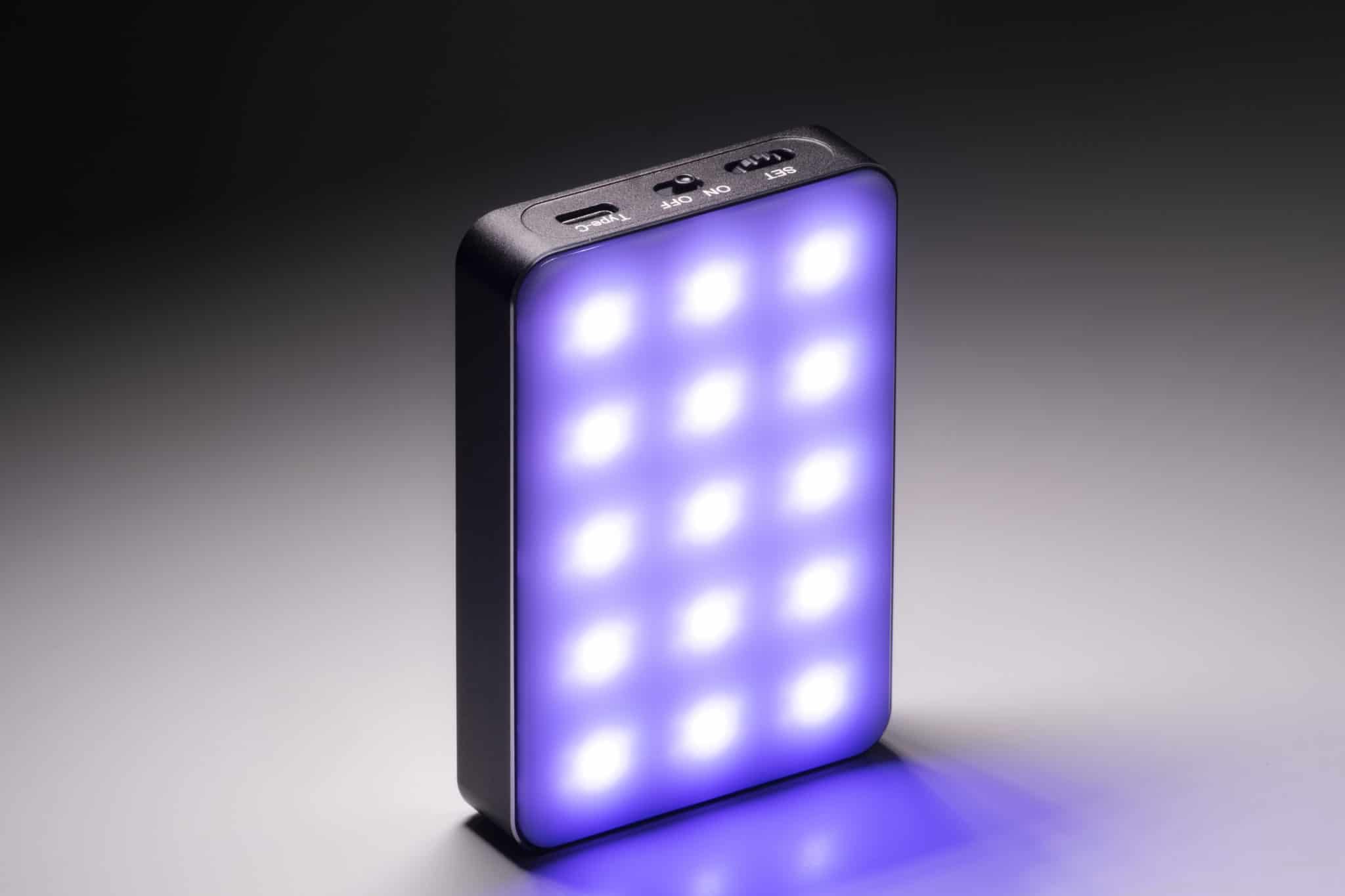The Panasonic Lumix GH4 certainly is the most talked about camera this year followed by the Sony A7s. We finally got our hands on a model in Germany and tested it.
You can watch the video review below:
In case you want to know more about the camera or you are unable to watch the video review – below is the review in written form with a few more details:
The GH4 is a mirrorless camera with a Micro-Four-Thirds mount. The sensor is small which results in a deep depth of field compared to full frame cameras that are known to create a shallow depth of field and a nice bokeh. The camera has a crop factor of ca. 2x when recording in Full HD and ca. 2.3x when filming in 4K or UHD.
The user has the option of selecting between AVCHD, MP4 and MOV with a variety of bitrates and frame rates such as 1080p 60p, 1080p 24p or UHD 30p. While 4K (4096×2160) has a 19:10 aspect ratio, UHD (3840×2160) has the usual 16:9 aspect ratio just like HD.
The biggest highlight of this camera obviously is the option of recording true 4K video. It also is the first camera that does record such a high resolution and costs less than $2.000. My main question before testing the camera was: How good is the 4K? The answer to that is not easy but also not too exciting if you want to or need to deliver 4K or Ultra HD footage. When looking at the footage at 100% on a 1080 display I could see that the image is not super sharp and detailed. Some image noise and artifacts are visible above ISO 800. All in all it looks good but I honestly expected more since the camera has had such a big hype even before the release.
In case you only need to deliver your projects in 1080p I would still recommend shooting in 4K because it gives the image more detail and sharpness. You can also reframe and crop the image which can be useful in interviews to get closer to the person you are filming. Another reason to film at a higher resolution is fake movement in post. For example slider shots or zooms. Even the 4K isn’t as good as the 1080 image at 100% moiré and aliasing isn’t a big problem. I only noticed it two times on distant windows as you can see below. But I am sure most cameras would have problems with that.
As usual there are a lot picture styles available but the only one that is useful to get the most dynamic range out of the image is CineD. The contrast is flat but the saturation looks a bit oversaturated. We shot everything in CineD to be able to grade the footage but in bright daylight the footage does only need a bit of exposure/contrast correction.
Digital image noise is visible at ISO 1600 and takes away the overall good look of the video. AT ISO 6400 the image pretty much falls apart. Details are gone as well as accurate color reproduction and the video looks very mushy.
One of the features that is really useful for filmmakers these days is the timelapse mode. You can select the interval and the aspect ratio and after the timelapse is finished it will be made into one video clip. The good news: The GH4 also saves the raw photo files in case you want to edit the pictures in post. The only downside when creating the internal clip is that it can only be rendered at 30 fps and not 24 fps.
Recording audio is easy because the camera has completely manual control, a headphone jack and a 3.5mm microphone input. The levels can be adjusted and are being displayed on the monitor before and while recording video.
The preamps seem to do a good job and I hadn’t problems with audio noise or hiss. If you want professional audio inputs Panasonic also released an Interface Unit which can be mounted below the body. It has two XLR inputs and can also record 4:2:2 video with 10-bit. If you record internally onto the SD card only 8-bit is available. The only downside is that this device costs more than the body itself!
The camera has all necessary features such as histogram, focus peaking, zebra, timecode, a bubble level on the monitor and continuous auto focus in video mode which we couldn’t test due to a problem with the lens we were using. The OLED display is bright and has a lot of detail and can be used in sunny daylight. Since I am not used to using a viewfinder I just tried the integrated EVF a few times. The resolution is high and it’s useful on bright days. The GH4 also has a 2x and 4x digital zoom which I used in UHD. It’s as good as digital zoom can be: Okay… You probably wouldn’t need it anyway if you are still delivering your films in HD and not 4K because you can zoom in / crop the video.
The ergonomics are good. The body is built like a traditional mid-range DSLR. The grip is solid and good for hand-held shots. The only problem is the lock for the SD card slot. It’s located on the right side. It opens easily when moving the hand forward or backward on the grip.
The monitor has no real grip to open it once it’s closed. When having a quick release plate mounted to the bottom of the body it’s hard to open it, so I recommend pulling the OLED out on top next to the viewfinder.
The mode dial has a lock so it stays in a certain mode. You can be sure that it doesn’t switch into another mode by accident which actually sometimes happens to me on other cameras. For everybody out there who loves touchscreens: The sensitivity of the GH4 touchscreen can be adjusted in the menu and can also be turned off completely in case you are not a big fan of touching a camera’s monitor.
Below is a short video in which I talk about the problems I had with the design and ergonomics of the camera:
Ergonomics (Panasonic GH4) from Fenchel & Janisch on Vimeo.
Bad news for Europeans and EU buyers: One of the things I noticed without knowing before was that if you buy the GH4 in Europe it has a recording time limit of 29:59 minutes. This is nothing new. A lot of DSLRs have it because the import tax would be higher for camcorders – and anything that can record longer than 30 minutes in one single take is considered a camcorder. It’s especially bad if you want to film longer interviews. If you buy the GH4 in the US you don’t have any time limits according to Panasonic.
Since we don’t have any Micro 4/3 lenses we rented a zoom lens, the Panasonic Lumix G VARIO 14-42mm F/3.5-5.6 II. That specific lens is really small and has a zoom and focus ring as well as image stabilization. The lens is sharp and useful for hand-held shots. I am just a bit confused that there are so many small MFT lenses out there. They are lightweight which can be good if you travel a lot but I wouldn’t want to use those on a proper shoot. I had the problem of almost searching for the focus ring because everything is so small and I like to look at the monitor during a shoot and not the lens. I looked for good MFT lenses on the web and found a few but compared to Nikon or Canon glass they are not exactly cheap or more affordable. That is also why I used Canon lenses with an adapter. I didn’t see any difference or loss of detail compared to the MFT lens. That means I didn’t had image stabilization which is a no go for hand-held shots so I shot most of the clips on a tripod.
If you want to get a shallow depth of field you will end up buying a few prime lenses with an aperture below F/1.8. I could also imagine that the GH4 could shine in combination with the Sigma 18-35mm F/1.8.
For whom is the GH4? I would say that the GH4 deserves all the hype and it currently is the camera I would recommend to most people except if you need a low light monster. Another thing to keep in mind is the crop which means that getting really wide shots is tricky as well as the resulting deep depth of field.
It’s a good choice because you have HD and 4K and you can decide whether you need that new and big resolution or only 1080p. It also is a camera for people who are not much into grading or don’t have the budget and time for it. The flat CineD picture profile is almost oversaturated and only the contrast/exposure needs a bit of adjustment to get a normal looking image.
There isn’t much to complain about and I honestly think that this could be the new 5D or 7D!
Even the menu has a lot of options I never had problems understanding something or being completely lost. So it’s also for beginners or people who are just getting started with filmmaking. You have a lot of helpful features like zebra, focus peaking etc. but you don’t need to use it.
Below is a short clip that shows that 4K and UHD is useful for HD deliveries due to the option of enlarging the image:
UHD – 1080p Crop Test (Panasonic GH4) from Fenchel & Janisch on Vimeo.
My biggest concern is if you are looking for a good 4K camera and expect that this camera is the one and only. 4K has been around for a few years thanks to RED but those cameras play in another league. There are not so many cameras out there below $5.000 that can record 4K so I am sure it takes a bit of time until we get cameras that are better in 4K. Another option is the Blackmagic Production Cinema Camera 4K if you need to deliver your projects in that resolution.
In case you can’t image how the detail and sharpness looks like when downscaling GH4 4K footage to 1080p – it’s comparable to graded ProRes footage from the Blackmagic Pocket Cinema Camera or footage from the Canon EOS C100.
Below is a short comparison video that shows footage from the BMPCC and the GH4. The Pocket Cinema Camera ProRes footage was graded so it matches the look of the UHD CineD clips.
This is not a scientific test but just a quick look at how different those two cameras are.
Blackmagic Pocket Cinema Camera vs. Panasonic GH4 from Fenchel & Janisch on Vimeo.
To me it looks like the BMPCC has a bit more aliasing / moiré but this might also be caused by the different focal length / crop. As I wrote above, don’t judge that comparison too hard it’s really just for the purpose of how detailed the image is and not about dynamic range or color. They are pretty close and I couldn’t say which one has a more detailed image.
A few things that stop me personally from buying the GH4: The crop factor is something that can be really annoying at times when you don’t have the time to put an ultra-wide-angle lens on the camera. A 24-70mm lens is pretty useless because it’s not a wide angle but also not a real telephoto lens. As usual the Tokina 11-16mm F/2.8 sounds like a good choice but of course only works with an adapter like the Metabones Speed Booster (Canon or Nikon mount). I should also mention that shallow depth of field is an issue. It’s really hard to get backgrounds blurry. In certain cases a deep depth of field is something really useful but in most cases when I shoot I want to control how shallow the DOF is.
Low light and high ISO values are not good friends with the GH4. As I mentioned in the video review, image noise and blocking can occur above ISO 800 at times which is sad because the video quality in daylight is great. Sure, not everyone shoots under low light conditions but even indoors without proper lighting noise can be an issue. For me it really is a better version of the Blackmagic Pocket Cinema Camera except that the GH4 doesn’t have such a high dynamic range. The BMPCC has a lot more features missing and also certain issues and is meant for commercial work that needs a heavy grade and less for documentary styled work.
I am glad that the market has changed so drastically within the last year or especially this year. While Nikon still thinks that 1080p cameras with a soft image (D4s, D810) are what pros want companies like Panasonic and Sony (A7s) are actually developing new cameras and are pushing the limits. Maybe Canon is going to catch up with the GH4 by releasing the 7D Mark II in September 2014 – who knows!? Chris Niccolls and Jordan Drake from THE CAMERA STORE discussed that topic as well in one of their recent videos:
Written by Moritz Janisch






